So I decide to start the day the Indian way again, well not exactly, but the pineapple and melon was followed by dal, vada, aloo curry and roti. Suitably fueled for the day we start our tour at 8.30am driving from our hotel through the old city towards the Amber Fort. Before leaving the city we stop at the Hawa Mahal or Palace of the Winds for a brief photo opportunity.
Hawa Mahal
Located in the City Palace complex the Hawa Mahal or Palace of Winds was built by the poet king Sawai Pratap Singh for the ladies of the royal household to watch everyday life and processions in the city without being seen. Later in the day we will be visiting the City Palace but whilst the traffic is relatively light we take the opportunity to view the external facade of the five-storey building with its 953 delicately honeycombed pink sandstone windows or enclosed balconies known as ''jharokhas"
Amber Fort
Although still fairly early in the morning there is a long line of tourists waiting to ride on the elephants up to the fort. It's warm already and Grace is slightly nervous about the ride. She manages to overcome her anxiety and soon we are clambering aboard our elephant both holding on tightly as we march onwards and upwards towards the Suraj Pol.
The elephant ramp was fairly steep in parts – although our driver overtook a number of other elephants on the ascent – making us cling on even tighter! Photographers ran along the fort's ramparts jumping from step to step – seemingly without a thought to the precarious drop below, calling and snapping away at the tourists. Once through the Suraj Pol or Sun Gate we dismount at the Jaleb Chowk.
The views from the Amber Fort are stunning, from an elevated position looking down on the courtyard and the gate I think of the Far Pavilions. From here we can also look down onto Maota Lake and Kesar Kyari (saffron flower beds) garden which look lush and verdant, it's monsoon season so they should do!
The Palace is divided into four main sections each with its own entry gate and courtyard. Suraj Pol and Jaleb Chowk.
Entering the fort through the Suraj Pol was certainly impressive, more so because of our elevated position on our elephant. What is striking once we pass through the gate is the size of the courtyard or Jaleb Chowk where soldiers would assemble for inspection and the returning armies would have held their victory parades.
Diwan-i-Am
We climb a staircase to the second courtyard which houses the Diwan-i-Am or Hall of Public Audience. It is here that the Raja would have heard and received petitions from the public. The Diwan-i-Am is set on a raised platform with colonnades with elephant shaped capitals.
Ganesh Pol
The Ganesh Gate, named after the Hindu deity Lord Ganesha who removes all obstacles in life, leads to the private palaces. The gate is a three storey structure elaborately decorated with mosaics and carvings. Above the gate is the Suhag Mandir, where the ladies of the royal family would watch the functions held in the Diwan-i-Am below, through latticed windows.
Private Palaces
We enter the third courtyard through the Ganesh Pol. There are two buildings in the courtyard: the Diwan-i Khas or Jai Mandir and the Sukh Maha, which are separated by a garden.
Diwan-i Khas (Hall of private audience) Also known as the Jai Mandir or Sheesh Mahal (Mirror Palace), this glittering jewel box is decorated with coloured glass and mirror mosaics. Parts of the palace are being renovated and we take time to watch the craftsmen as they work on restoring the glass inlaid panels.
Sukh Niwas
Also known as the Sukh Mahal (Hall of Pleasure) we enter through a sandalwood door inlaid with marble. A practical and innovative feature is the piped water supply which flows along an open channel within the building keeping it cool. The water flows through to the garden.
Garden
The garden is set in sunken beds in a hexagonal design, laid out with narrow channels lined with marble around a star shape pool with a fountain at the centre. In addition to the water from the Sukh Mahal channel there are also cascade channels, "chini khana niches" which originate from terrace of the Jai Mandir which keep the garden looking lush and verdant.
Palace of Man Singh I
We walk through to the Palace of Man Singh I, which is the oldest part of the palace fort. It took 25 years to build and was completed in 1599 during the reign of Raja Man Singh I (1589–1614). There is a pillared baradari or pavilion in the central courtyard; frescoes and coloured tiles decorate the ground and upper floor rooms in this palace. This pavilion, which would have been curtained for privacy) as a meeting place by the maharanis (queens of the royal family).
Unfortunately all too soon our time us up and we have to make our way back to the waiting minibus. We leave the fort via the Bhairav Gate and as we walk down the steps have a chance to get a last lingering look over the Maota lake and then look back up at the fort perched up on the hillside.
Back on the minibus we head back towards Jaipur, taking time to stop to admire the Jal Mahal from the roadside.
Jal Mahal
The Jal Mahal or Water Palace is set in the middle of the Man Sagar Lake. The palace and the lake around it were renovated and enlarged in the 18th century by Maharaja Jai Singh II of Amber. Built in red sandstone the palace comprises five storeys of which four are submerged during monsoon season when the lake is full leaving only top floor visible above the water. On each of the four corners there are octagonal "chhatri" (which means umbrella of canopy) which are elevated, dome-shaped pavilions used as an element in Indian architecture. The palace had suffered subsidence in the past and also seepage due to water logging, which have been repaired under the recent restoration project undertaken by the Government of Rajasthan. Initial restoration work undertaken some 10 -15 years ago was not satisfactory and after careful examination unsatisfactory plaster work was removed and reinstated using traditional materials for plastering. The traditional plaster mix consists of a special mortar mix of lime, sand and surkhi (brick dust) mixed with jaggery, guggul (a gummy plant resin) and methi (cummin) powder.
Jantar Mantar
Our next stop is the Jantar Mantar, one of five observatories built around India by Jai Singh II, of which, the Jaipur observatory is the largest and best preserved.
The observatory consists of fourteen major geometric devices for measuring time, predicting eclipses, tracking stars' location as the earth orbits around the sun, ascertaining the declinations of planets, and determining the celestial altitudes and related ephemerides.
The Samrat Yantra (Supreme Instrument), the largest instrument and the world's largest sundial, is 90 feet (27m) high, Its shadow carefully plotted to tell the time of day to an accuracy of about two seconds in Jaipur local time. Its face is angled at 27 degrees, the latitude of Jaipur. The Hindu chhatri (small cupola) on top is used as a platform for announcing eclipses and the arrival of monsoons.
Built from local stone and marble, each instrument carries an astronomical scale, generally marked on the marble inner lining. Bronze tablets, all extraordinarily accurate, were also employed. Thoroughly restored in 1901, the Jantar Mantar was declared a national monument in 1948.
The instruments are in most cases huge structures. The scale to which they have been built has been alleged to increase their accuracy. However, the penumbra of the sun can be as wide as 30 mm, making the 1mm increments of the Samrat Yantra sundial devoid of any practical significance. Additionally, the masons constructing the instruments had insufficient experience with construction of this scale, and subsidence of the foundations has subsequently misaligned them.
And with time moving swiftly on we walk from the Jantar Mantar to the Jaipur City Palace complex.
Jaipur City Palace
It has been a busy day with so much to see and our final stop of the day is the City Palace complex which promises yet more exquisite architecture and artefacts. Within the complex there are numerous, courtyards, garden and buildings. Initial construction was undertaken by Sawai Jai Singh II between 1729 and 1732 whilst subsequent rulers continued to make additions.
We could spend at least a whole day exploring all of the palaces, pavilions and temples here but we have to confine ourselves to a few of the more notable ones including the Mubarak Mahal, Chandra Mahal, Diwan-I-Khas, the Peacock Gate and individual items such as the Gangajelies.
Mubarak Mahal,
Built in the late 19th century by Maharaja Madho Singh II as reception centre, the "Auspicious Palace", fuses Islamic, Rajput and European architectural styles. Today it houses the textile museum which includes formal royal costumes. Particularly interesting are the clothes of Sawai Madhosingh I, who was 3.9 ft wide and weighed 550 lbs!
Chandra Mahal
Also known as the Chandra Niwas each floor of this seven-storey building has been given a specific name such as: Sukh-Niwas, Ranga-Mandir, Pitam-Niwas, Chabi-Niwas, Shri-Niwas and Mukut-Mandir or Mukut Mahal. Only the ground floor, which has been turned into a museum, displaying carpets and manuscript which belong to the royal family is open to visitors. The remainder of the palace is occupied by descendants of the former ruling families of Jaipur.
There is beautiful peacock gate at the entry to the Mahal.
Diwan-I-Khas (Hall of Private Audience)
The marble floored hall offers welcomed shade from the heat. We take time to look at one of the huge silver urns displayed in a glass cabinet. At just over 5ft in height they were made from melting 14,000 silver coins and weigh 750 lbs. The urns were made by Maharaja Sawai Madho Singh II, a highly pious Hindu, to carry water from the Ganges, some 4,000 litres, to drink on his trip to England in 1901 for Edward VII's coronation. The vessels are known as Gangajelies (Ganges-water urns).
Barrow boys
As we drive back to the hotel from the City Palace the street are lined with barrows and carts selling fresh produce. Most of the vendors seem to sell one item, for example just coconuts or just bread. And after a day's work in the sun there's nothing better than to have a sit down!
We've seen so much today and after a tiring day, we are happy to return to our air conditioned hotel room, wash away the dust and relax for a while before heading to the restaurant for dinner, which for me is yellow lentils, rice paneer and bread.
From Palace of Winds to Stargazing and City Palace
Friday, August 12, 2011
 Jaipur, Rajasthan, India
Jaipur, Rajasthan, India
Other Entries
-
1A Passage to India
Aug 084 days prior London, United Kingdomphoto_camera0videocam 0comment 0
London, United Kingdomphoto_camera0videocam 0comment 0 -
2Looking for the real India...
Aug 093 days prior Delhi, Indiaphoto_camera8videocam 0comment 0
Delhi, Indiaphoto_camera8videocam 0comment 0 -
3New day - New Delhi
Aug 102 days prior Delhi, Indiaphoto_camera25videocam 0comment 0
Delhi, Indiaphoto_camera25videocam 0comment 0 -
4On the road to Rajasthan
Aug 111 day prior Delhi, Indiaphoto_camera9videocam 0comment 0
Delhi, Indiaphoto_camera9videocam 0comment 0 -
5Jaipur - The pink city
Aug 111 day prior Jaipur, Indiaphoto_camera14videocam 0comment 0
Jaipur, Indiaphoto_camera14videocam 0comment 0 -
6From Palace of Winds to Stargazing and City Palace
Aug 12 Jaipur, Indiaphoto_camera49videocam 0comment 0
Jaipur, Indiaphoto_camera49videocam 0comment 0 -
7From pink city to ghost city
Aug 131 day later Jaipur, Indiaphoto_camera9videocam 0comment 0
Jaipur, Indiaphoto_camera9videocam 0comment 0 -
8The Jewel in the Crown
Aug 131 day later Fatehpur Sikri, Indiaphoto_camera22videocam 0comment 0
Fatehpur Sikri, Indiaphoto_camera22videocam 0comment 0 -
9A grand night in Agra
Aug 131 day later Agra, Indiaphoto_camera7videocam 0comment 0
Agra, Indiaphoto_camera7videocam 0comment 0 -
10Taj Mahal - Crown of palaces
Aug 142 days later Agra, Indiaphoto_camera24videocam 0comment 0
Agra, Indiaphoto_camera24videocam 0comment 0 -
11All aboard the Shatabdi Express
Aug 153 days later Agra, Indiaphoto_camera2videocam 0comment 0
Agra, Indiaphoto_camera2videocam 0comment 0 -
12On the road from Jhansi to Khajuraho
Aug 153 days later Jhansi, Indiaphoto_camera8videocam 0comment 0
Jhansi, Indiaphoto_camera8videocam 0comment 0 -
13Temple "..."in the presence of God"
Aug 153 days later Khajuraho, Indiaphoto_camera19videocam 0comment 0
Khajuraho, Indiaphoto_camera19videocam 0comment 0 -
14Temples
Aug 164 days later Khajuraho, Indiaphoto_camera35videocam 0comment 0
Khajuraho, Indiaphoto_camera35videocam 0comment 0 -
15From spiritual life to village and school life
Aug 164 days later Rajnagar, Indiaphoto_camera14videocam 0comment 0
Rajnagar, Indiaphoto_camera14videocam 0comment 0 -
16Aarti on the Ganges
Aug 164 days later Varanasi, Indiaphoto_camera17videocam 0comment 0
Varanasi, Indiaphoto_camera17videocam 0comment 0 -
17Morning ritual on the Ganges
Aug 175 days later Varanasi, Indiaphoto_camera26videocam 0comment 0
Varanasi, Indiaphoto_camera26videocam 0comment 0 -
18Sarnath - Starting the Wheel of the Dharma
Aug 175 days later Sarnath, Indiaphoto_camera31videocam 0comment 0
Sarnath, Indiaphoto_camera31videocam 0comment 0 -
19Leaving Varanasi or bye bye Benares
Aug 186 days later Varanasi, Indiaphoto_camera0videocam 0comment 0
Varanasi, Indiaphoto_camera0videocam 0comment 0 -
20Transit Delhi
Aug 186 days later Delhi, Indiaphoto_camera1videocam 0comment 0
Delhi, Indiaphoto_camera1videocam 0comment 0 -
21Overnight luxury in boom town
Aug 186 days later Gurgaon, Indiaphoto_camera0videocam 0comment 0
Gurgaon, Indiaphoto_camera0videocam 0comment 0 -
22Return trip to Delhi airport
Aug 197 days later Gurgaon, Indiaphoto_camera2videocam 0comment 0
Gurgaon, Indiaphoto_camera2videocam 0comment 0 -
23From Delhi to Dabolim
Aug 197 days later Delhi, Indiaphoto_camera1videocam 0comment 0
Delhi, Indiaphoto_camera1videocam 0comment 0 -
24Goa
Aug 197 days later Dabolim, Indiaphoto_camera0videocam 0comment 0
Dabolim, Indiaphoto_camera0videocam 0comment 0

 Jaipur, Rajasthan, India
Jaipur, Rajasthan, India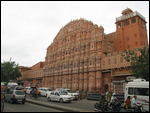
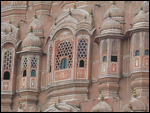
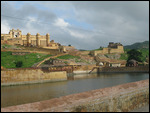
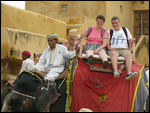
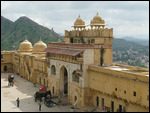
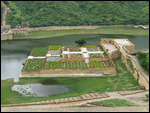
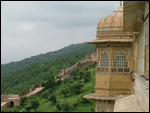
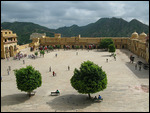
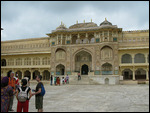
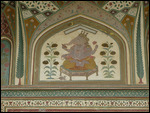
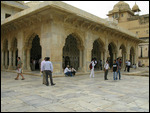
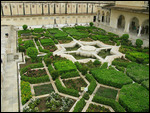
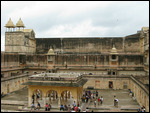
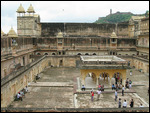
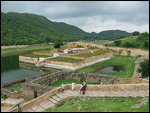
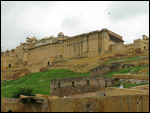
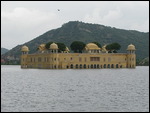
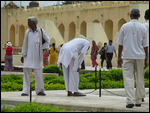

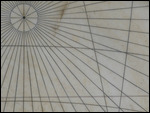
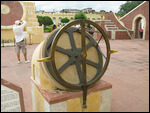
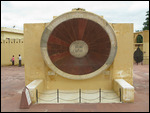
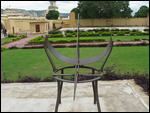
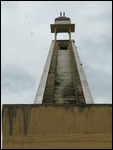
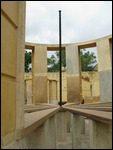

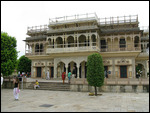

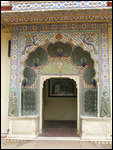
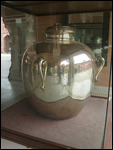

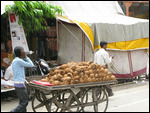
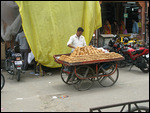
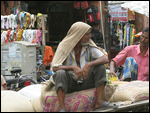


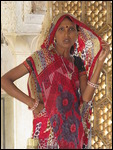
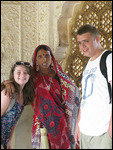
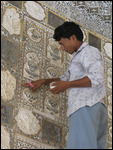
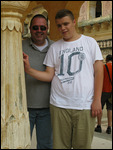
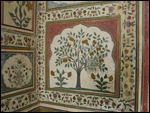
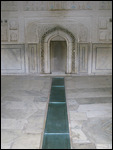
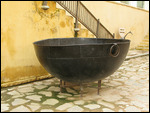
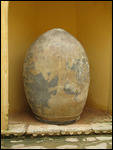

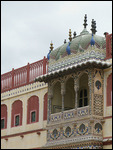
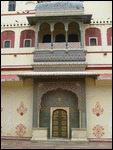
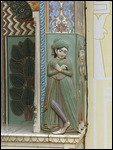
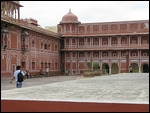
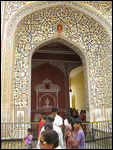
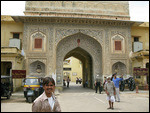
2025-05-23